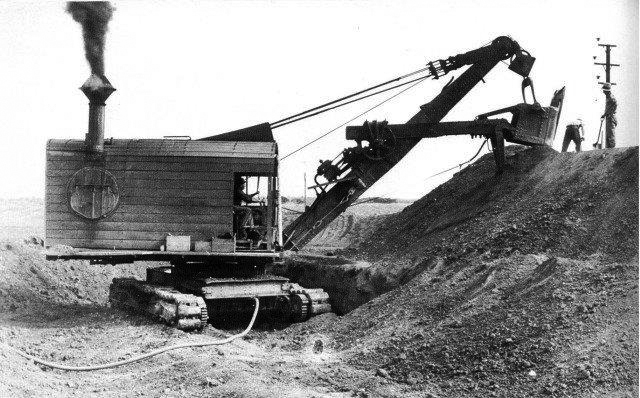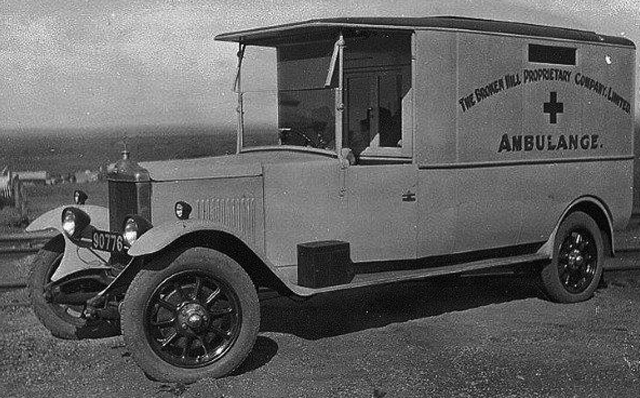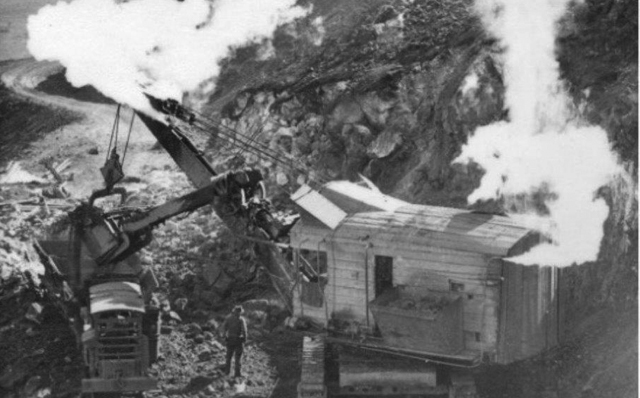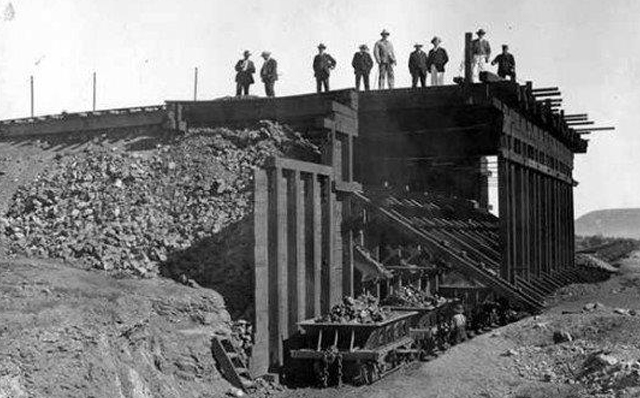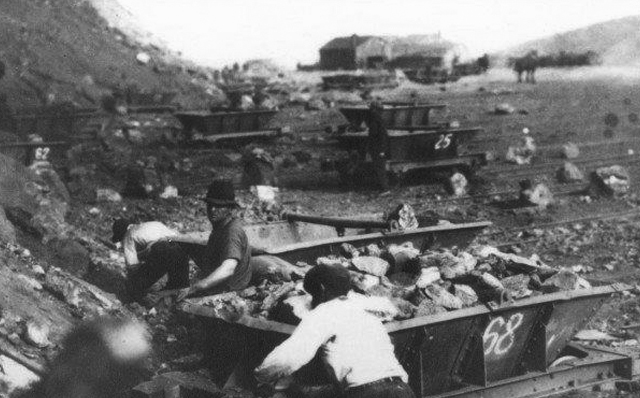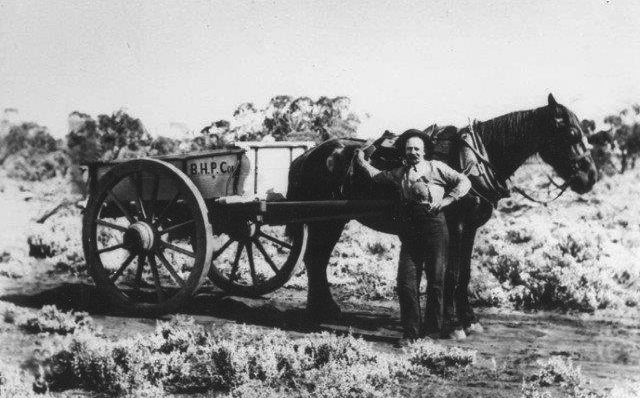OUR HISTORY – PRESERVING OUR PAST
“In order to know where you are going you need to know where you have been”
Iron ore and steel are still strong commodities in our nation and provide employment for many families and have once again become a part of Iron Knobs present economy with SIMEC re-opening the mines around Iron Knob.
The Iron Knob Progress Association Inc. is proud to share with you our piece of history and hope you enjoy the contributions, not only of the present members and associates, but also the hard work of past members who have helped compile the history for us to enjoy.
HISTORY OF IRON KNOB
The following is taken from the Booklet – ‘ Looking Back ‘ by Ada Casey and Marlene Cleasby
The explorer, Edward John Eyre passed Iron Knob several times in 1839 before marking it on his map. He climbed a hill that was either Iron Baron or Iron Prince and he identified the area as principally ironstone. On 30th January 1854 James Paterson lodged application Nº 17 for grazing lands to the north of Iron Knob and the lease was called Cooroona Hill.
A diagram attached to the application showed the name Corunna Hill and a hill named ‘ The Iron Knob ‘ 4 ½ miles S.S.W of Corunna South. This and other leases were taken over by Abraham Scott in 1868 an Morphett and Davenport in the 1870’s.
Just when the ‘ Knob ‘ came to be called that is not clear but at least by 1854 the name was used although it was sometimes ‘ Iron Nob ‘
Men work with “Betty”
The Historic Digger
BHP Co’s early ambulance
An early wagon
The back end of “Betty”
In 1878 Sir Samuel Davenport shipped ironstone samples to the Indian and Colonial Exhibition in London, but not until 1880 was an attempt made to epxort the deposits commercially. A gentleman from Prussia, Ernst Siekmann, pegged out leases and formed the Mount Minden Mining Company. Unfortunately the company fell behind with its rent for these leases and failed to comply with the labour conditions imposed by the South Australian Government and so in December 1896 these leases were cancelled.
This is when B.H.P. Officially began in 1899 transporting the ore by bullock teams to Port Augusta. This mode of transport took two days to reach the Port. The man had to carry enough provisions and water themselves and the bullock teams in temperatures of up to 120° F in the shade, for wages of 7/2d per day. From Port Augusta the ore was railed to Port Pirie. Although 100,000 tons of ore was transported this way before 1900, the cost was out of all proportion to the value of the ore.
Between 1900 and 1911 over 600,000 tons of ore was shipped to Port Pirie averaging 69.5% metallic ore.
The ore from Iron Knob is of exceptionally high metallic content, as rich as 68 -69% by comparison with 30% in England, 50-55% in the U.S.A and 36% in Luxemburg and Lorraine.
“Betty” The Digger loading a truck
The counterweights used were made of raw ore!
A gentleman poses in his supply truck
Men standing above loaded wagons
Authority for the construction of a tramway was granted under, ” The B.H.P. Hummock Hill to Iron Knob Tramway and Jetties Act, 1900.” The opening of the 3ft 6 in light tramway in that year, and the concentration of the lead smelting at Port Pirie, together with the exclusive use of Iron Knob ore for fluxing, had the immediate effect of closing down the small ironstone quarries that had previously been worked in other parts of the state.
These quarries were situated near the townships of O’Leary, Melrose, Woomera and Quorn. At Hummock Hill (since 1914 known as Whyalla.) a 900 foot jetty was installed at the shipping port for the transfer of the ore from the railway trucks barges for shipment.
A full wagon leaving the pit
Wagons to be loaded by hand
Hard working men loading raw ore by hand
BHP Co’s early supply vehicle
TIMELINE OF IRON KNOB IN THE 1800’S
1900’S IRON ORE PRODUCTION
– Iron Knob & Middleback Ranges
1941-1950
1951-1960
1961-1970
1971-1980
1981-1990
1990-1997
Total

